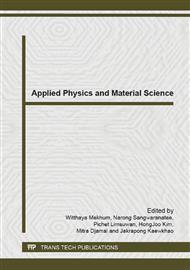p.251
p.255
p.259
p.263
p.267
p.271
p.275
p.280
p.285
A Study on Composition of Plaster Waste from Ornament Factory
Abstract:
Plaster is a material which is widely used in Thailand. However, some variations of plaster that contain powdered silica or asbestos may present health hazards if inhaled. Asbestos is a known irritant when inhaled in powder form can cause cancer, especially in people who smoke, and inhalation can also cause asbestosis. Therefore, finding a way to recycle plaster waste has received attention. This study investigated the composition and phase of major plaster waste from ornament factory in Thailand by X-rays Fluorescence spectrometer (XRF) and X-Rays Diffractometer (XRD). The main compositions of new plaster and plaster waste by an XRF spectroscopy were SiO2, SO3 and CaO, they accounted for about 99.6 wt% of the total. The main phase of new plaster was found to be SiO2, CaSO4, CaO, S and Ca2Si form. The main phase of plaster waste was found to be SiO2 and CaSO4 form. These results indicated that plaster waste may be used as substitute or additive for silica source in other industry.
Info:
Periodical:
Pages:
267-270
Citation:
Online since:
June 2014
Authors:
Price:
Сopyright:
© 2014 Trans Tech Publications Ltd. All Rights Reserved
Share:
Citation:


